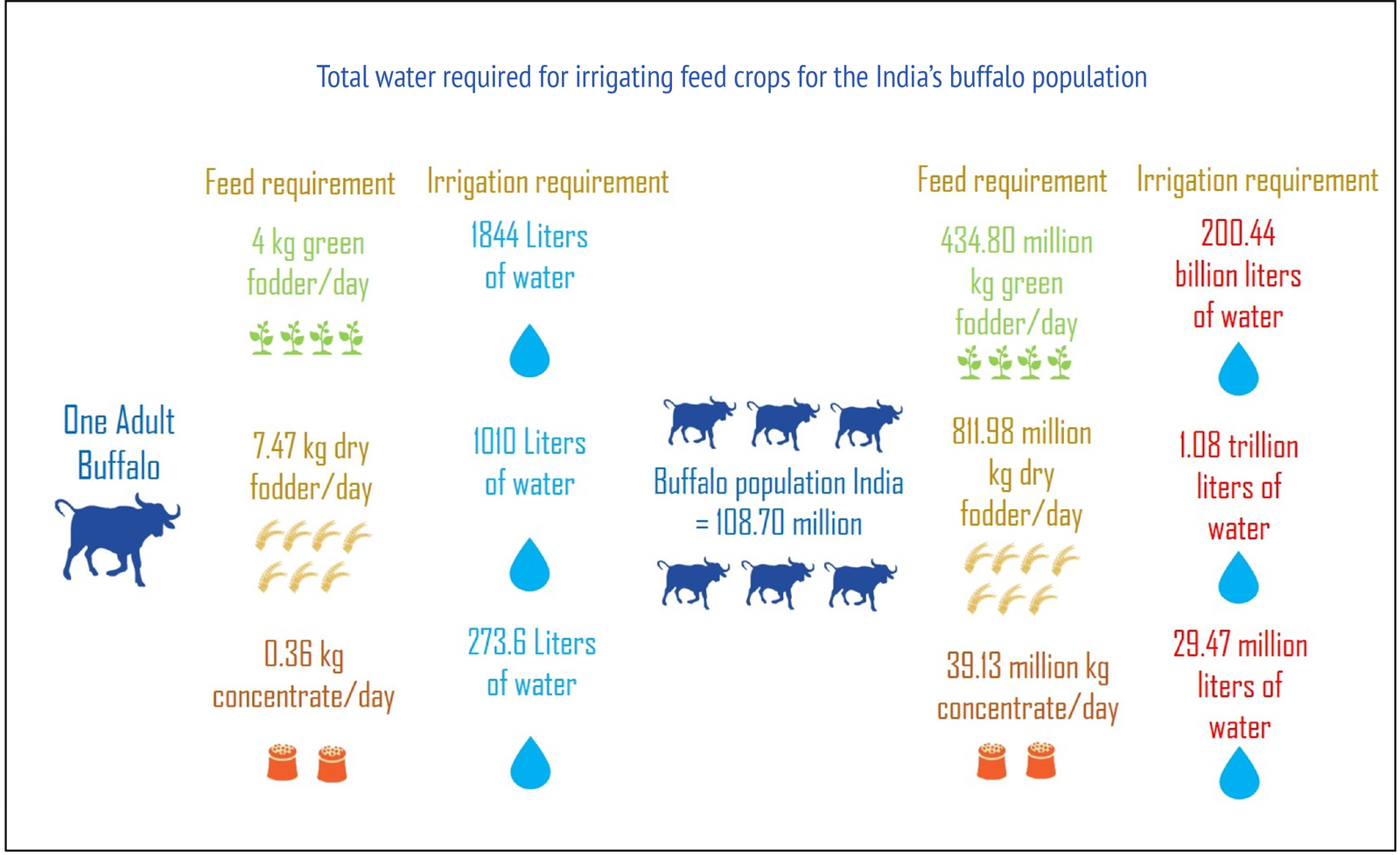India’s buffalo meat industry is amongst the largest in the world, exporting over 1.2 million tonnes of meat in 2018 – 19 alone. However, the industry might be extracting a heavy toll on the environment, with reports indicating rapid degradation of pasture lands and release of greenhouse gases as consequences of present livestock rearing practices.

A plate of Shammi kebab, sumptuous butter chicken, or buff tikka, never disappoints a meat lover’s palate. But this romance of palate and meat might be playing a role in aggravating the waning state of the environment.
Indians in the 21st century are experiencing changes in lifestyle and food habits coupled with a population surge. The per capita annual consumption of meat has increased to 4.4 kg per person and is placing pressure on production lines. This, in turn, has resulted in greater demands for water and land resources for rearing livestock.
Feeding the food
India is one of the leading exporters of buffalo meat in the world. On the domestic front, monthly consumption of buffalo meat increased by nearly 13% in rural areas, and 25% in urban areas between 2009 and 2012. In order to produce this buffalo meat, a considerable amount of surface and groundwater is required, especially given that buffaloes have a substantial appetite.
A single buffalo consumes around 4 kg of green fodder, 7 kg of dry fodder, and 0.36 kg of concentrates per day. With a buffalo population of over 100 million, this translates into a daily water requirement of 1 trillion litres for dry fodder, 200 million litres for green fodder, and 29 million litres for concentrates, respectively.
Commenting on the situation, Nilanjan Ghosh, Director, Observer Research Foundation and an economist says, “Per capita availability of water is indeed declining over time, and the meat industry continues to be an area of concern. However, to better assess the situation, additional indicators besides water supply are also required.”
In addition to requiring large volumes of water, livestock also depend on land resources for grazing. Indian pastures sustain a total of 512 million livestock grazing on about 12 million hectares of land. This implies an average of 42 animals grazing per hectare of land, higher than the recommended threshold of five animals per hectare. As a result, issues of overgrazing plague these lands, not only compromising land and soil quality, but also leaving the animals devoid of adequate pastures to feed on.
Maharashtra, one of the top five buffalo meat-producing states, presents the highest percentage of degraded pasture lands at 0.43% of the total geographical area of the state. The figure may seem minuscule at present, but long-term effects might not be so small.
Greenhouse gases from green pastures
Another issue associated with higher meat production is the emission of methane. Ruminants such as buffalo and cattle make up the bulk of livestock in India. The natural digestive processes of these animals produce methane, also known as Enteric Methane Emission (EME). It has been estimated that over 200 million tonnes of CO2 equivalents are released by Indian livestock each year. A continued increase in greenhouse gas emissions can not only cause environmental damage and energy loss, but may increase surface temperatures as well.
According to Jimmy Borah, an experienced biodiversity conservationist, “The meat industry does emit a considerable amount of greenhouse gases, besides other sectors such as electricity, industries, and transportation. However, further converting the livestock into meat is more responsible for greenhouse gas emissions than the livestock alone.”
Are we doing enough?
On this matter, Sayantan Ghosh, a former environmental journalist with Millenium Post, emphasizes the importance of meat as a source of protein for India which not only lags on the human development index but also faces a low level of public knowledge on the impact of the meat industry on land and water resources. “India lacks a holistic approach to nutrition,” he says, “Therefore, till the time we increase the research on making enough and affordable supplementary nutritional food, the people will suffer from the lack of an alternative to meat.”
Fragmented data and a lack of systematic research into the impact of increasing meat consumption on the overall contribution to climate change distorts the situation. For example, as per the National Family Health Survey (NFHS) 2015 – 16, Kerala was one of the highest-ranked Indian states in weekly consumption of meat/fish. But such data was not followed by any investigation into balancing meat consumption and production with climate and sustainability goals.
Hence, both individual effort and systematic investigations are the need of the hour to balance the consumption of meat with sustainable use of resources. On the policymaking front, assimilating and gathering knowledge could be the first step to recognizing such issues and making decisions.
Did you enjoy this article? Please let us know in the comments below.